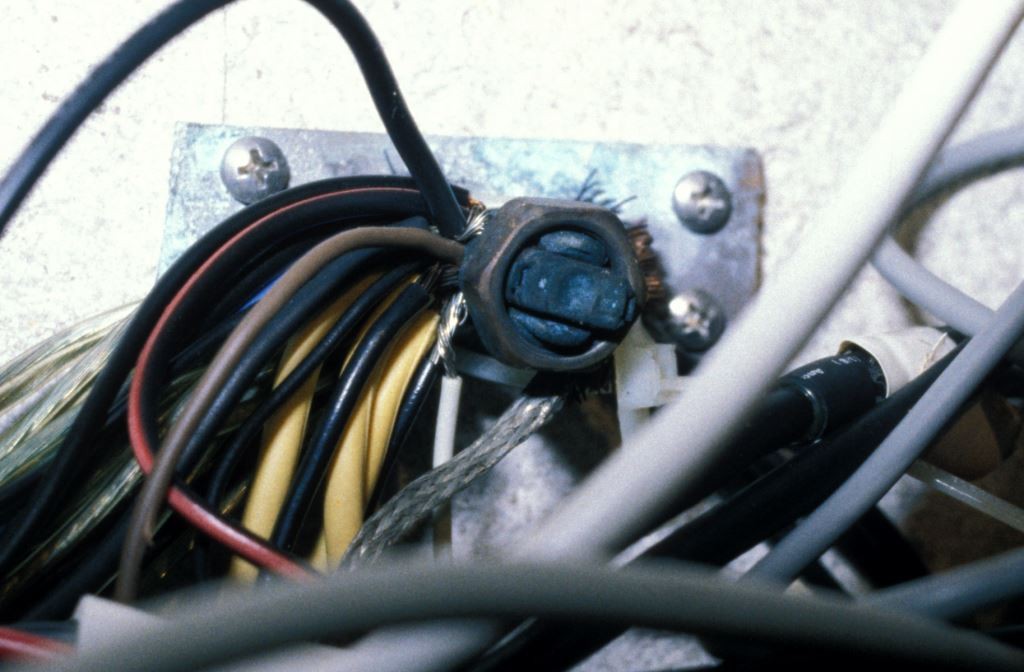From the Masthead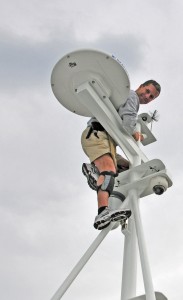
Not long ago I was aboard a boat with a client; he was attempting to describe his goals for the modifications and changes he wanted to make, and was struggling to find the right words, to describe the parts of the boat to which he was referring; he clearly wanted to use the right nautical terms, however, he simply didn’t know what they were, he looked at me a few times and said, “What’s that called?” rather than referring to the ‘sole’ as a ‘floor’, ‘overhead’ as a ‘ceiling’ or ‘stringer’ as a ‘beam’. I filled in the blanks for him, and then said, “You are to be commended for wanting to use the right words to describe these parts of the boat, keep it up”.
The world of ships and boats is fascinating, I routinely say, without exaggeration, a day doesn’t go by where I don’t learn something, and much of that involves terminology. The argot of the sea is rich, historical, descriptive, and it permeates our everyday language, including terms like ‘taken aback’, ‘change tack’, ‘don’t let the cat out of the bag’, and “turn a blind eye’ to name just a few.
A number of years ago, an employer discouraged me from using proper nautical terminology when writing job descriptions for staff, saying, “They don’t understand it and it makes them feel inferior”. I disagreed, explaining, on the contrary, learning the terminology of any trade is what separates, distinguishes and elevates professionals from those outside their trade, much like aviation, medicine or construction, each of which has its own rich terminology, seagoing lingo has a long tradition, one that should be preserved, cherished and promoted. I cringe when I hear marine industry professionals use lubberly terms like ‘window’ instead of ‘port’, or ‘across’ instead of ‘athwartships’.
For those in the trade, I encourage you to take the time to learn and use the proper terms, it’s your professional responsibility to use the correct words, and to carry on the tradition of nautical argot. For boat owners, while you are under no obligation to use proper salty terminology, I’d encourage you to do so, if for no other reason than to honor the tradition of seafaring, and the esprit de corps it embodies.
As something of a word nerd, I have a bookshelf in my office dedicated to nothing but nautical dictionaries, which I’ve collected over the years. If you are interested in learning more about ‘the right words’, I can recommend two, “The Sailing Dictionary” second edition, published by Sheridan House, and “The Oxford Companion to Ships and the Sea” (long out of print but available used). The former is a dictionary in every sense of the word; however, it includes some wonderful hand-drawn illustrations. The latter is more of an encyclopedia, with classic 50’s vintage black and white photos. Both would be a valuable addition to any bookshelf, ashore or afloat.
Finally, when you read this, I’ll be walking the aisles of the annual Marine Equipment Trade Show, in Amsterdam, the Netherlands. I’ll make daily posts from the show to my Facebook, LinkedIn and Instagram pages, and I’ll cover what I’ve seen in an upcoming Marine Systems Excellence column.
Please visit our Facebook, Instagram, and LinkedIn pages.
FIRE! Are You and Your Vessel Prepared?
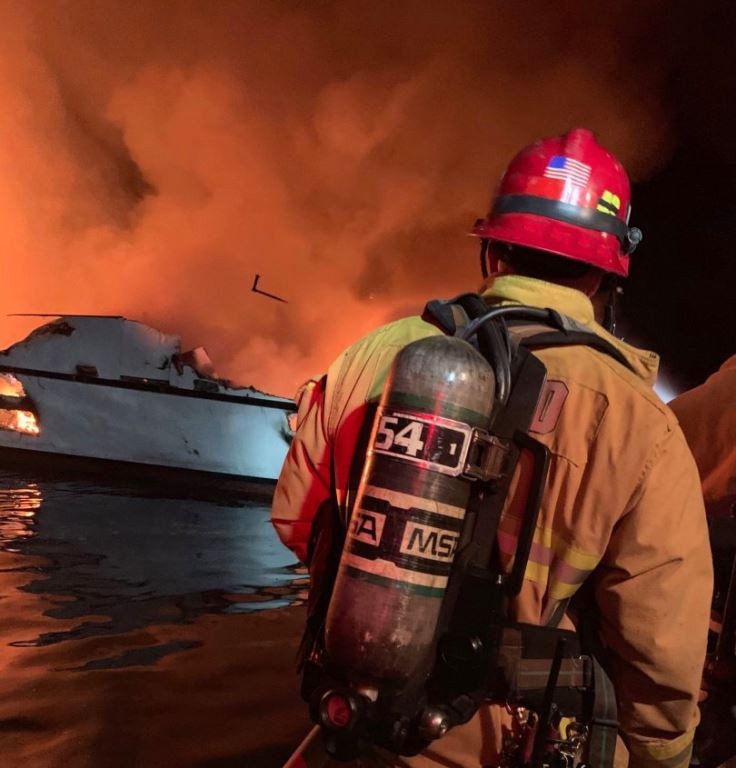
A firefighter looks on as the hulk of the dive boat “Conception” burns, claiming the lives of all 34 passengers. Photo credit “AFP PHOTO / Ventura County Fire Department/ HO”
Most boat owners in the US, and many elsewhere, have heard about the recent tragic dive boat fire in Southern California, with the resultant loss of life. Many of my clients and readers have inquired about regulations regarding fire, firefighting, smoke alarms and escape routes.
Like most others in this industry I anxiously await the full NTSB report, which will hopefully detail the cause of the fire (as of now, the cause remains undetermined), as well as any other deficiencies regarding escape routes and fire/smoke detection devices. At the moment there is speculation that the cause may have been a rechargeable lithium ion battery, like that used in a phone, camera, water “sled” etc. I’ve encountered overheated Li Ion batteries, having had one catch fire in the toolbox of my pick-up truck on one occasion a few years ago.
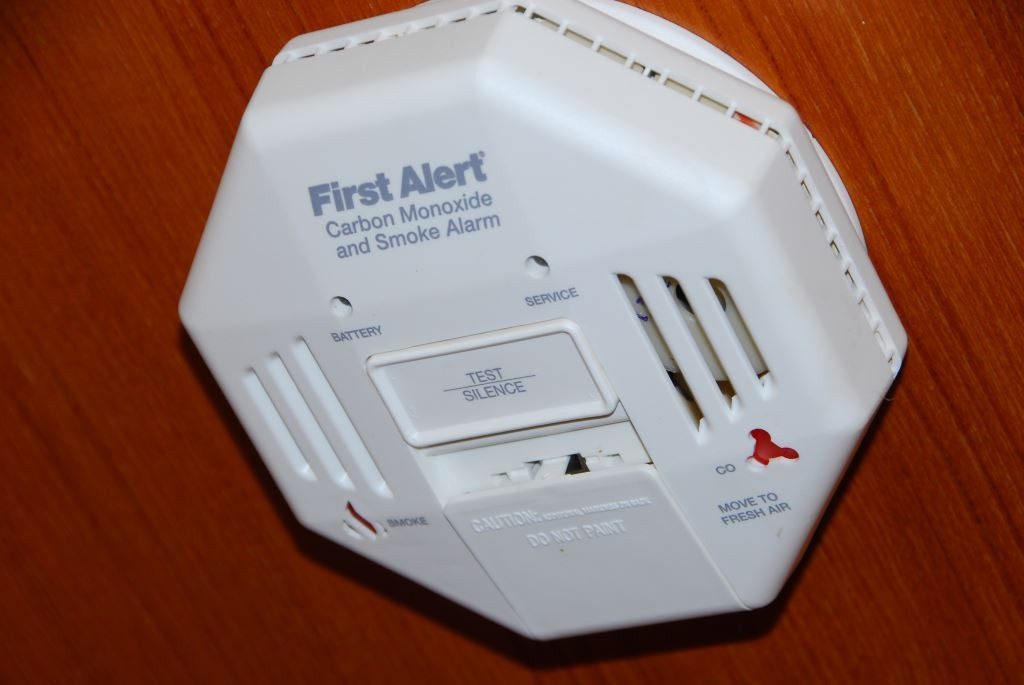
Fire detection; smoke detectors are cheap insurance, you should have one on both sides of every door aboard.
Until the full report (a preliminary report has been released, the link is included below) is released all we can do is speculate. However, there are things you can do to prevent such a tragedy aboard your own vessel.
Make sure you have working, up to date (most common battery-powered household units are OK to use aboard, with some caveats, see link below) smoke detectors with fresh batteries. You should have one on both sides of every door, as well as in engineering spaces, and behind electrical panels. Among other things, smoke detectors should rely on photoelectric sensing, or a combination of both photoelectric and ionization sensing; and not ionization sensing alone. The last time I wrote about this was after another tragic on-board fire.
Make sure you have fire extinguishers, more than the USCG-required minimum. They are relatively inexpensive, you should have one in every cabin, and no fire extinguisher should be more than three large steps away. More on selection here.
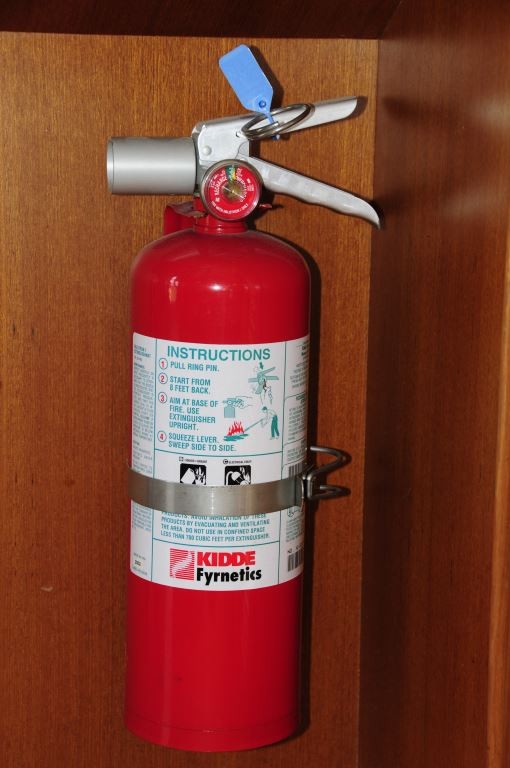
Firefighting; make certain your vessel is equipped with more than the minimum number of fire extinguishers.
Make certain your fixed engine room and other engineering space fire extinguishers are up to date, inspected, and pressure gauges are in the green, as well as interlinked with engines, gensets, and ventilation systems. I recently inspected a 3 year old vessel, whose safety pins had never been removed from fire extinguishers in the engine room and machinery space; which means neither of these units could have been discharged manually. More on that here.
Preliminary NTSB report: https://www.ntsb.gov/…/Re…/DCA19MM047-preliminary-report.pdf
Recent Coast Guard Safety bulletin: https://images.saymedia-content.com/…/M…/safety-bulletin.pdf
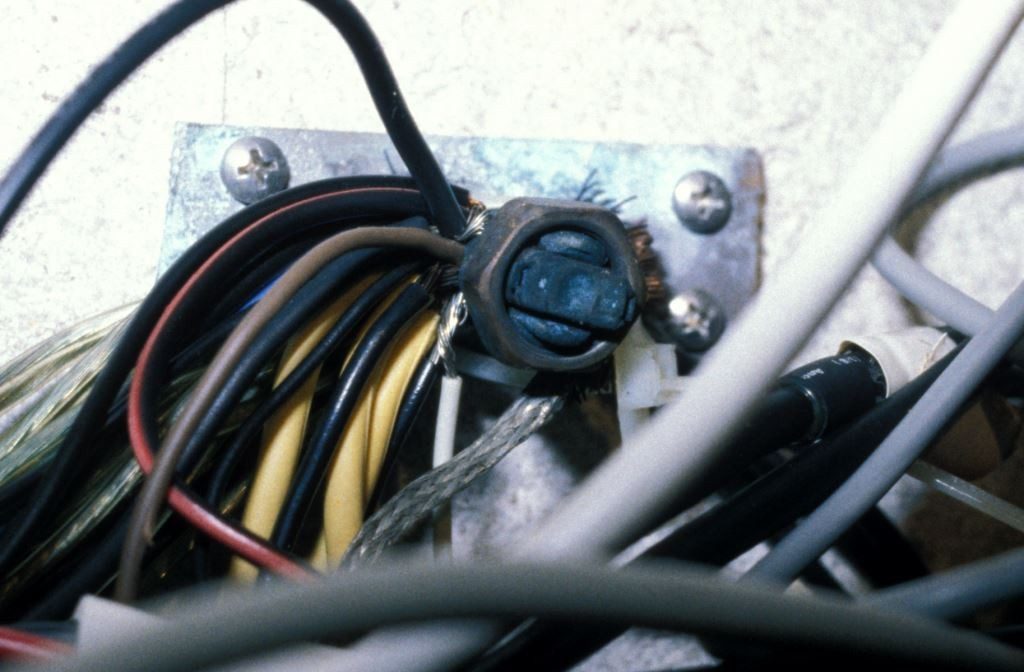
Prevention; sound, well-maintained, ABYC-compliant wiring should be the minimum standard for every vessel.
On the subject of escape routes, for recreational vessels in the US there are no legal requirements, however, there are two sets of recommendations, one from the National Fire Prevention Association, and another from ABYC, both are excerpted below. Additions that are mine are in bold.
NFPA 302, Fire Protection Standard for Pleasure and Commercial Motor Craft
Chapter 4 Hull
4.1 General Arrangement.
4.1.1 The hull shall be arranged so that all compartments are accessible and all escape hatches are unobstructed and readily accessible.
4.1.1.1 Every boat having enclosed accommodation spaces shall have a readily accessible and unobstructed means of egress.
4.1.1.2 Every boat having enclosed accommodation spaces shall have a second accessible means of egress if it is possible for one exit to be blocked by a fire in a galley or machinery area.
4.1.1.3 The means of egress in 4.1.1.1 and 4.1.1.2 shall provide for minimum clear opening dimensions of 14 in. × 18 in. (36.8 cm × 47 cm) (rectangular); or 18 in. (45.7 cm) diameter (circular); or 270 in. sq. (1741 cm 2) with a minimum dimension of 14½ in. (36.8 cm) (oval).
4.1.1.4 Any hatch that is required for egress shall have a means of being operated from the inside and a means of being operated from the outside when not secured from the inside.
4.1.1.5 All hinged hatches shall have a means or method to support the hatch in an open position
ABYC’s take on the subject
H-3.5 GENERAL REQUIREMENTS
3.5.1 Enclosed accommodation compartments or designated sleeping compartments shall have:
3.5.1.1 a readily accessible and unobstructed means of exit, and
3.5.1.2 a second readily accessible means of exit to the open air if the main exit leads through or over an engine space or directly past a cooking appliance.
3.5.2 The means of exit shall have the following minimum clearing characteristics:
3.5.2.1 circular shape: diameter of at least 18 in (457 mm),
3.5.2.2 any other shape: a minimum dimension of 14.5 in (368 mm) and minimum area of 270 in. sq. (0.174 m2). The exit shall be large enough for a 14.5 in (368 mm) diameter circle to be inscribed.
NOTE: The circle should be inscribed after taking in consideration any restrictions including hinges, latches, and stays, etc.
3.5.2.3. The vertical distance to the means of exit shall not exceed 47.5 in (1.2 m). If cushions or mattresses are below the means of exit, the distance is taken from the compressed material.
3.5.2.4 Any hatch that is required for a means of exit shall have a means of being operated from the inside, and from the outside when secured and unlocked.
Fire should be very high on the list of concerns for all vessel owners and operators, make certain you’ve given careful thought to prevention, detection and fighting in equal measures.

